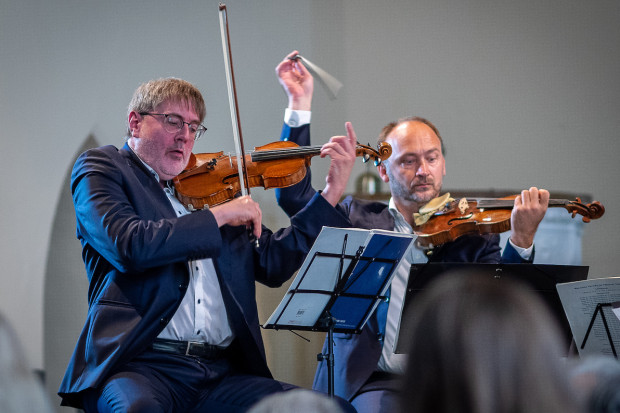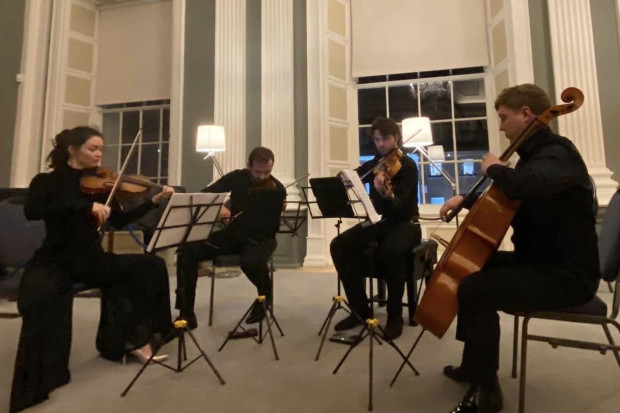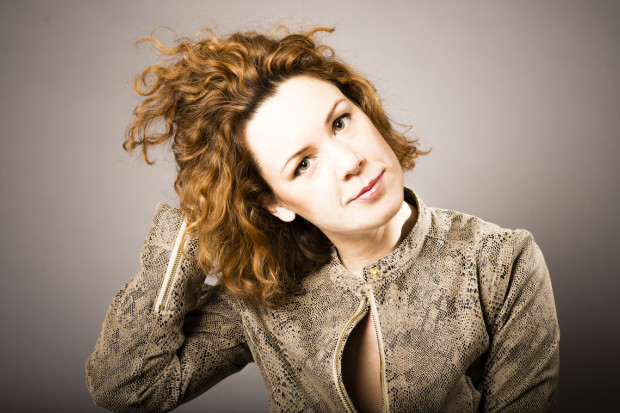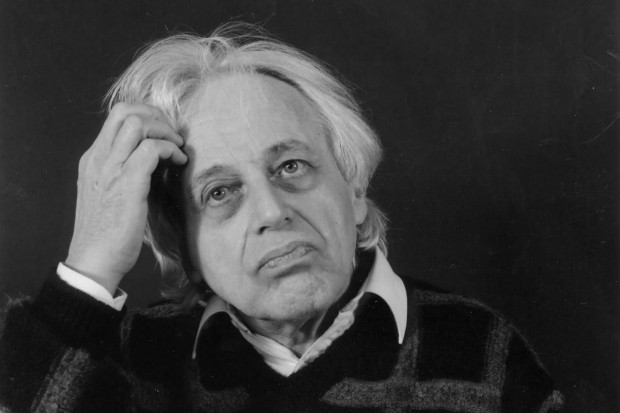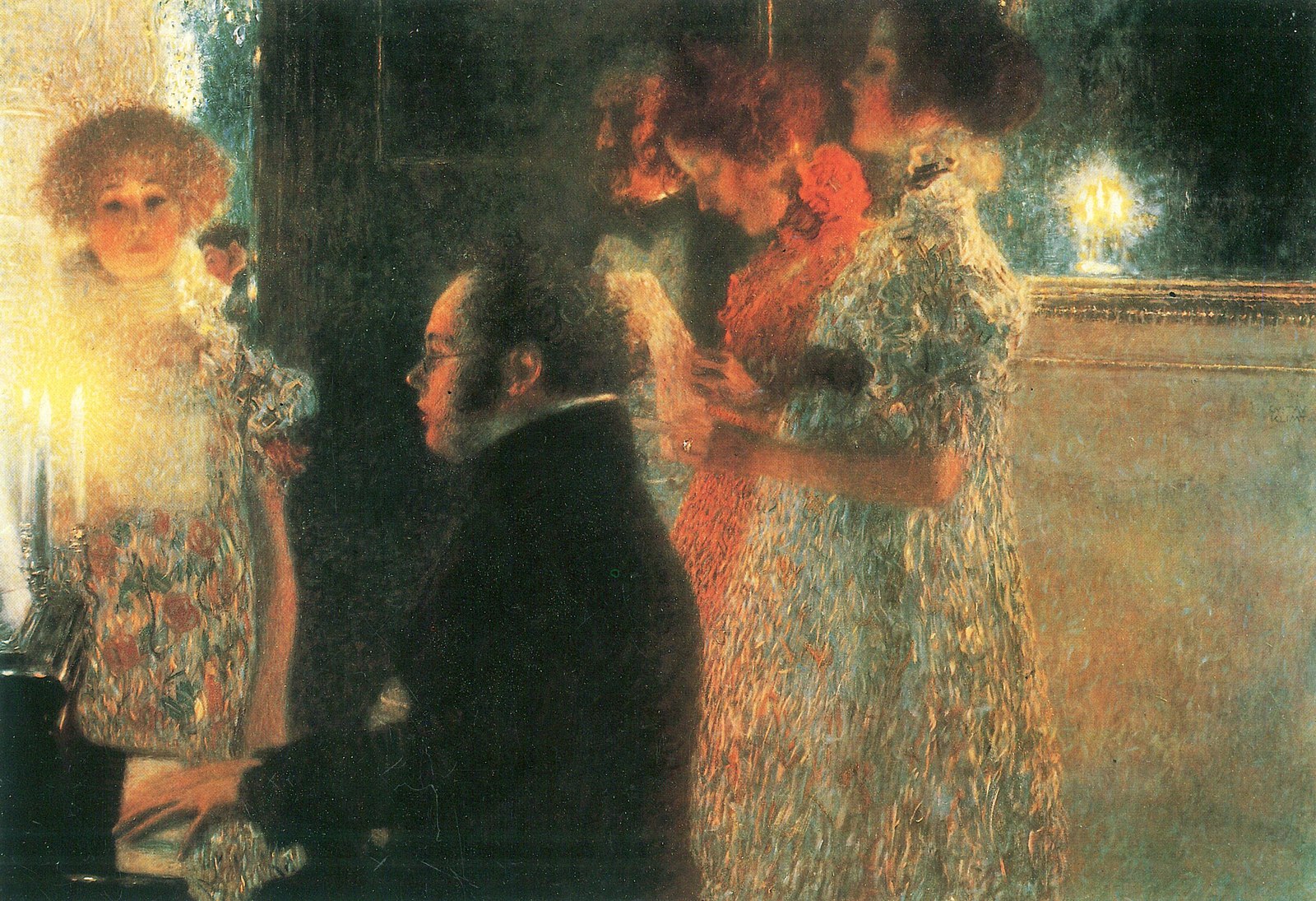
'Schubert at the Piano' by Gustav Klimt
The Forgotten Influences on Pianists and Composers of the Eighteenth and Nineteenth Centuries
We are learning and learning about how different and unexpected our musical past is. For example, for much of the history of Western classical music, improvisation was ubiquitous, it was seen as bad form to play music from memory, and nothing, not even tuning systems, was standardised. But it’s not just the music itself that’s foreign: the music was enmeshed in an intellectual and historical matrix that was also different. How did this broader context affect the music and how should modern performers interpret it? This is the question Gabriela Mayer sets herself in her new book The Art of the Unspoken. Specifically, Mayer wants to reclaim an understanding of how rhetorical devices, linguistic parallels and the singing voice were understood by pianists and piano composers of the eighteenth and nineteenth centuries. And in line with the ‘integrated approach’ to performance, pedagogy and research that she champions, this historical work has a strong practical strand too. Mayer has excellent credentials for undertaking such an ambitious task: she has a background in piano performance and currently does research and teaching as Head of Department of Keyboard Studies in MTU Cork School of Music, where she has been developing her approach.
The Art of the Unspoken contains a lot of history; indeed, it fills the entirety of the opening chapter, which is an overview of the connection between language and instrumental music from the Baroque period through to the Romantic era. Each of the book’s parts opens with an overview of one of the three topics in the book’s subtitle and then discusses how the approach thus delineated might be incorporated into performance. The challenge The Art of the Unspoken thus sets itself is to balance historical contextualisation and practical pedagogy.
Applying rhetoric to music
Chapters 2 and 3, on rhetoric, are the most successful. The second chapter gives a detailed overview of the discipline, which was important in the Renaissance era, studied in school much as grammar and maths are now and with its own dictionary of technical vocabulary. In chapter 3, Mayer establishes that and how composers and performers applied rhetoric to music, and discusses several specific rhetorical devices with the aid of a generous provision of musical illustrations. Learning that aposiopesis – which Mayer translates as ‘general pause’ – is not just a term that can be ahistorically applied to the music of Classical and Romantic composers but a rich concept in terms of which these composers were thinking in writing their music, is far from learning how to play rapid thirds, but in a hard-to-articulate way it is just as valuable. To give one example of how Mayer suggests it is important: it indicates how important language was to these composers’ understanding of music. Even if they rarely thought that music is language, the idea that musical meaning can be detailed and rule-based, in the way that linguistic meaning is, suggests a performance style that is founded less on expressive bombast or creating an atmosphere and more on a measured, clear, ‘speaking’ approach.
If the literary art of interest to Classical-era composers is rhetoric, then the Romantic era is more interested in drama and poetry; chapter 4 is where Mayer discusses these influences. Again there is a lot of fascinating material. It is often easy to hear the two themes of a sonata as ‘opposed’, but this opposition can be one of logical (rhetorical) opposition or of interpersonal (dramatic) tension. Mayer’s discussion of how musicians increasingly came to understand opposition as having the latter sense as the nineteenth century progressed gives our perception of opposition detail an historical grounding. Similarly, her discussion of the importance of dramatic ‘character’ over exhaustive discourse in the Romantic era is illuminating: I will not say that it made Schubert’s Moments musicaux, D 780, for whose meaning I have been puzzling for years, less mysterious, but I think I can sit with their mystery more comfortably now.
Historical discussions
However, The Art of the Unspoken’s ‘integrated’ approach does not always succeed. As academic history it is oddly incurious: it is heavily reliant on the New Grove Dictionary, passages are often quoted second-hand, and it lacks any critical engagement with either the texts discussed or recent scholarship. Further, its insights, though real, often require patience on the part of the reader, as Mayer has a tendency to meander (as in the opening chapter) and she can get distracted. (She also confusingly and needlessly includes the original of some but not all non-English quotations.)
These shortcomings are obtrusive in chapter 5, on the importance of the singing voice to instrumental and keyboard performance in the Classical and Romantic eras. It opens with an overview of this – except it then doesn’t, because Mayer gets sidetracked by a historical discussion of expressive keyboard performance in which the specific question of the singing voice is discussed only occasionally. The chapter does then focus on its topic, but the discussion is too abstract and brief. It is true that ‘a phrase that might lie easily within the grasp of a pianist’s fingers often gains its full meaning only when conceived in vocal terms’ (p. 161), but this hardly requires archival investigation. The Art of the Unspoken could have excelled here by considering specific examples. What can we learn about Beethoven’s understanding of the singing voice that would inform our performance of the cantabile movement of his ‘Pathétique’ sonata, Op. 13? What do we learn about how to treat the inner voices and how they help sustain the longer notes? Should the bass line be conceived of as a singing line too? Or take Chopin’s Nocturne Op. 37, No. 1 in G minor, whose opening melody is replete with puzzling harmonic movements, on-the-beat rests, grace note runs, and leaps. A student might reasonably expect some information about the importance of opera (or, regarding the middle section, chorale) to Chopin’s musical language. The general advice this chapter gives instead, such as ‘don’t rush short notes when playing at a slow tempo’, is inadequate to this sort of interpretative challenge. Yet it is only at this level of detail that historical context can teach us more than general musicianship can.
Speaking of Chopin, Mayer doesn’t. The Art of the Unspoken is really a study of the Germanic piano tradition, and with that ‘Germanic’ missing from the subtitle, Mayer’s exclusion of Chopin, not to mention composer-pianists from John Field to Louise Farrenc to Sergei Rachmaninov, is bewildering. Even within the Germanic tradition, the extreme conservatism of Mayer’s examples is disheartening: Clara Schumann is given only a passing mention, and Fanny Mendelssohn doesn’t even get that much.
Performance advice
The final chapter’s title, ‘An Integrated Approach to Performance Training’, promises to bring together the scattered insights of The Art of the Unspoken. And to be sure, some integration of the chapters does take place in the final chapter. It is once again obscured, though, by a lack of focus: much of this chapter is given over to quite general performance advice. I don’t doubt that reflective practice and psychologist Carol Dweck’s ‘growth mindset’ are useful concepts for pianists. But I don’t know what they have to do with eighteenth- and nineteenth-century piano performance traditions.
The Art of the Unspoken is an uneven and somewhat frustrating book. Its topic is fascinating, and Mayer evinces plenty of historical knowledge. It is great, too, to see someone attempt to integrate the three disparate tasks of performance, pedagogy and academic research: in these hyperspecialised days, there is a substantial risk of historically informed performances being dry and academic, of charismatic performers not understanding the music they’re playing, and of deep musical understanding being lost through one’s inability to communicate it to one’s students. But the reason hyperspecialisation arose was because doing any one of these things well is hard enough already. Maybe the scope of Mayer’s ambition excuses the failures of this book, but they still make it less than compelling.
The Art of the Unspoken: Rhetorical Devices, Linguistic Parallels and the Influence of the Singing Voice in Classical and Romantic Piano Literature by Gabriela Mayer is published by Peter Lang. Visit www.gabrielamayerpiano.com.
Published on 22 February 2024
James Camien McGuiggan studied music in Maynooth University and has a PhD in the philosophy of art from the University of Southampton. He is currently an independent scholar.










